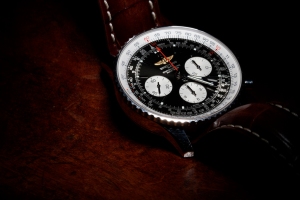Starting a watch collection is a dangerous thing. Like most addictions (for it is just that) it sneaks up on you. That first step – from having just one utility watch that tells the time to buying the second – seems simple. “Just one,” you say, “I’ll get one good watch. I only need one. Just one. That’ll do me.”
That’s how everyone starts. Soon, you’ll have Chrono24, Worn & Wound, Hodinkee and several watch dealers on bookmark. You’ll have downloaded the WatchVille app to every device you own. And you’ll be sneaking glances at the wrists of perfect strangers. And, clearly, you’ll have burned a smoking, ragged hole in your chequebook.
This is normal. At least, it is for a watch addict. So, save some time. Don’t kid yourself that ‘one watch is enough’. It’s not. The optimum number of watches is always n+1. To save a little more time, here’s my list of the classics that every watchie should own at least once.
Rolex Submariner

Yes, I know it’s a cliche. I know it’s the most faked watch in the known universe. It’s also the second most splendid piece of form following function in watchworld. Subs are lovely because they weren’t designed to be. Before they ended up on the wrist of almost photocopier rep, they were proper diving tools. So they’re instantly legible, hard to damage, waterproof (clearly) and never need winding up.
Mind you, given the life expectancy of a watch in most collections, perhaps their most endearing feature is their exceptional ease of re-sale.
Yours for anywhere between £2,500 and “HOW MUCH?! I could buy a house for that!”
Rolex Explorer I

If the Sub is the second most splendid piece of form following function, the Exp I is the first. Designed to survive pretty much anything, the Exp is plain, clean and built like a safe. Unlike the Sub, you won’t spend your life saying “Yes, it is real actually…” because no-one will ever spot it on your wrist. Except a fellow watchie. And there are enough variants of the Exp 1, from gilt-dialed to modern, that you’ll never be bored.
Yours for anywhere between £2,400 and £20,000+
Jaeger-LeCoultre Reverso

More refined but no less robust is the Jaeger-LeCoultre Reverso. So called because the entire body of the watch flips over to present its caseback to the world. Handy to protect your watchface when you’re playing polo, apparently. Again, plenty of variants to choose. There’s the smaller Classique (handy if you don’t have wrists like Herman Munster) right the way through to the socking great Répétition Minutes à Rideau. You’ll see rather fewer of these around than their Rolex brethren.
Yours for anywhere between £1,500 and £150,000+

Breitling Navitimer
Another unashamed choice of a watch that had a job to do – keep ‘planes in the air. The Navitimer was intended as a navigational aid for airmen, hence the sliderule on the bezel and dial. They’re not small watches, but they do seem a lot smaller on the wrist than they should. There’s a lot of history to enjoy too; from the 1952 806 right up to the “is that a clock on your wrist?” 48mm GMT Navitimer 01.
Yours for anywhere between £600 (quartz) and £1,800 (mech) to £40,000
Omega Speedmaster

If the Navi kept aircraft up there, the Speedmaster kept Apollo 11 on track and helped get Apollo 13 back down again. That’s reason enough to own one. But add in the range of variations from model to model and there’s enough interest to keep you engaged for years. And the Speedie is another reliable, robust, no-babying sort of watch that you can happily put on your wrist every day.
Yours for anywhere between £1,200 and £60,000 (limited editions)
IWC Mk XII

Another aviation watch, the Mk XII holds one of the most beautifully made movements in a watch you don’t need to sell your soul for. It’s IWC’s reworked Jaeger LeCoultre 889/2. And that horological gem alone is worth putting your hand in your pocket for. XII’s are far from common, so if you want to own almost the opposite of the Sub, this one’s for you. A wonderful, classic piece of watchmaking.
Yours for anywhere between £1,800 (stainless steel) to £5,000 (gold)
Grand Seiko

OK. Calm down. GS are about as far removed from the £40 Seikos you see in H Samuel as a Mitsuoka Viewt is from a MkII Jag. GS are, in fact, the watch world’s inside secret. The quality of Grand Seiko makes a lot of other far, far more expensive makers look a little red and shuffly as they stare at the floor. Take a proper look at a GS and you’ll wonder how some other makers charge so much for poorer quality. And, at the risk of kicking off a controversy match, a GS will have a proper authentic in-house movement.
Yours for anywhere between £700 (eye-wateringly accurate quartz) to £22,000 (platinum)
The main thing with watches is ‘buy what you like and what interests you’. I have a thing for functional things, don’t like bling and don’t buy new (so the prices above are all for secondhand kit). Someone who’s into bling will steer you towards makers like Hublot and some of the more, er, ornamented Breitlings.
Someone with rather deeper pockets will head towards the rarified horological wonders of Patek Philippe. Someone with bottomless ones will snare Richard Mille‘s creations or Roger Smith‘s works of genius. Someone with shallower ones will look at vintage Longines or perhaps some Heuers. But even trawling the charity shops and Fleabay for £5 tickers will turn up something interesting.
The only problem is stopping once you’ve started.